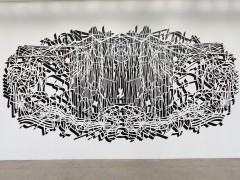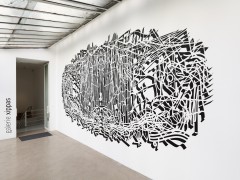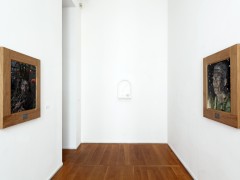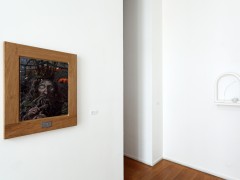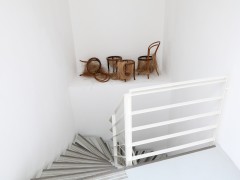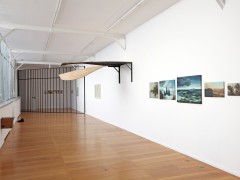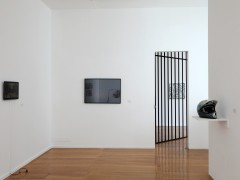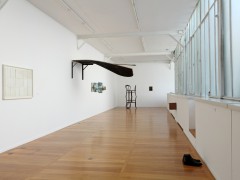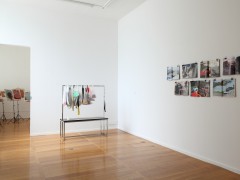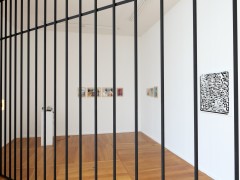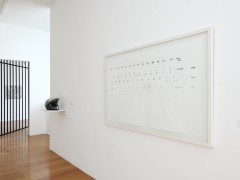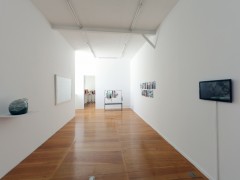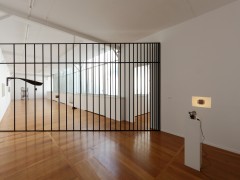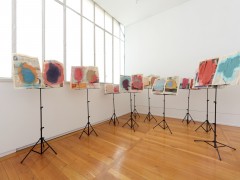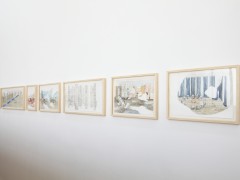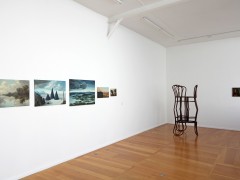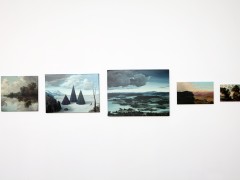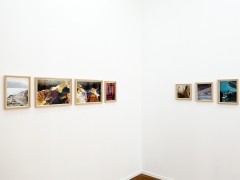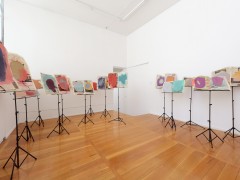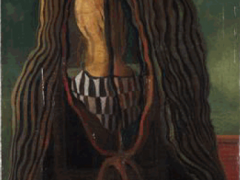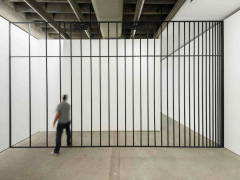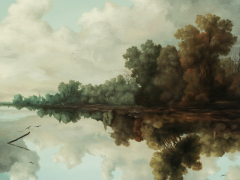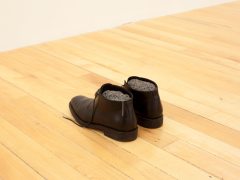Beyond Magic
15.06 – 27.07 /2014
Galerie Xippas, Paris
Beyond Magic
Ruth Benzacar @ Xippas
roberto aizenberg, ernesto ballesteros, eduardo basualdo, marina de caro, leandro erlich, max gómez canle, carlos herrera, carlos huffmann, luciana lamothe, jazmín lópez, jorge macchi, liliana porter, pablo reinoso, miguel angel ríos, florencia rodríguez giles, pablo siquier, mariana tellería, adrián villar rojas.
Exhibition from June 14th to July 26th, 2014
Opening Saturday, June 14th at 3 pm.
Marina De Caro’s performance : La Logia del Color at 6.30 pm
The air was so damp that fish could have come in through the doors and swum out the windows, floating through the atmosphere in the rooms.
Gabriel García Marquez, One Hundred Years of Solitude, Harper & Row, 1967.
Ruth Benzacar @ Xippas
There are some art galleries, of which we know the name and the brand, and that invest their energy in image and marketing. Yet it is not always easy to indentify their artists. And there are those that work like propelled “submarines” and establish their artists so far from their homes that we often forget where they came from. Ruth Benzacar Gallery is closer to the second category. Jorge Macchi, Pablo Reinoso, Leandro Erlich, Eduardo Basualdo, and Adrián Villar Rojas, just to list a few, have in common that they were discovered and are represented by this gallery on Florida street, situated in the very nerve center of Buenos Aires, the “hardcore” microcenter as the porteños call it, and managed from mothers to daughters for almost fifty years.
On the eve of this anniversary – which will coincide with the gallery opening a new space that can lend itself more easily to the development of large scale projects – Renos Xippas wishes to pay homage to the extraordinary work they’ve done of diffusing Argentine art produced there since the 1960s and to show works by selected artists in his Parisian space.
Beyond Magic
For decades, art critics and historians have shouted a simple principle to the world: Latin America isn’t an artistic category, not more than the countries that make it up. In Beyond the Fantastic1, collection of texts published in 1995, numerous voices protested against all essentialist and homogenized visions that attribute artistic characteristics to the continent. Beyond Magic makes direct references and therefore moves the exhibition beyond a tentative definition of Argentine art, and also to a new age in the intimate history of companionship between Latin American art and artists2.
The selection of works shown at the Xippas Gallery have in common that they resist definitions. It is magic realism seen as the uncanny ghost: Freud’s concept of “worrying strangeness” developed in an essay by the same name (Unheimliche) where he analyzed the malaise born from the split with the reassuring rationality of everyday life. In this essay, Freud takes the example of the violently uncomfortable moment experienced during a train trip and provoked a surprising vision of his own image reflected in a mirror: “Jumping up with the intention of putting him right, I at once realized to my dismay that the intruder was nothing but my own reflection in the looking-glass on the open door. I can still recollect that I thoroughly disliked. […] It is not possible, though, that [my] dislike of [it] was a vestigial trace of the of the archaic reaction which feels the ‘double’ to be something uncanny?3 ”
We all know that strange feeling of a gap, this difference between what we thought we knew: a photograph taken unbeknownst to us where we are the stranger to ourselves, a history never told which seems familiar, a feeling of déjà-vu, are all strange irruptions in reality, small shifts outside time which don’t appear to fit into the present.
Pablo Siquier’s shattered map (which looks as if it was encoded by an algorithm only he knew) welcomes the visitor under the glass ceiling and sets the tone of the exhibition. He creates dialogues between Liliana Porter’s winding pathways, Leandro Erlich, Eduardo Basualdo, and Pablo Reinoso’s trompe l’oeils, Carlos Huffmann’s oral recitations of historical figures (not written ones), Marina de Caro’s performance installations, Luciana Lamothe’s sculptures which are frozen in precarious situations, Carlos Herrera’s sculptures born out of a veiled reality, Mariana Tellería’s collages, Max Gómez Canle and Adrián Villar Rojas’s installations, Jorge Macchi’s disappearances and superimpositions, as well as Jazmín López, Miguel Angel Ríos and Roberto Aizenberg’s worrying doubles.
The particularity of the Xippas Gallery’s space is its architecture, which forces the visitor to interact with a space without exits. In order to discover all the artworks show, it is necessary to go into the first room, go up a stairway, cross a hallway, a room, another room, go down the stairs, and then to do it all over again to leave. The exhibition plays with this criteria and each artwork reappears on the path, split into its double by the new perspectives offered to the visitor.
Albertine de Galbert, curator of the exhibition
1Beyond the Fantastic: Contemporary Art Criticism from Latin America, edited by Gerardo Mosquera, London: Institute of International Visual Arts, 1995.
2Albertine de Galbert created in 2011 the website arte-sur.org, after traveling and reseraching in a dozen countries of Latin America.
3 Sigmund Freud, An Infantile Neurosis and Other Works, Volume XVII translated by James Strachey, London, Hogarth Press, 1955, p. 248
This post is also available in: Spanish


 Home
Home
